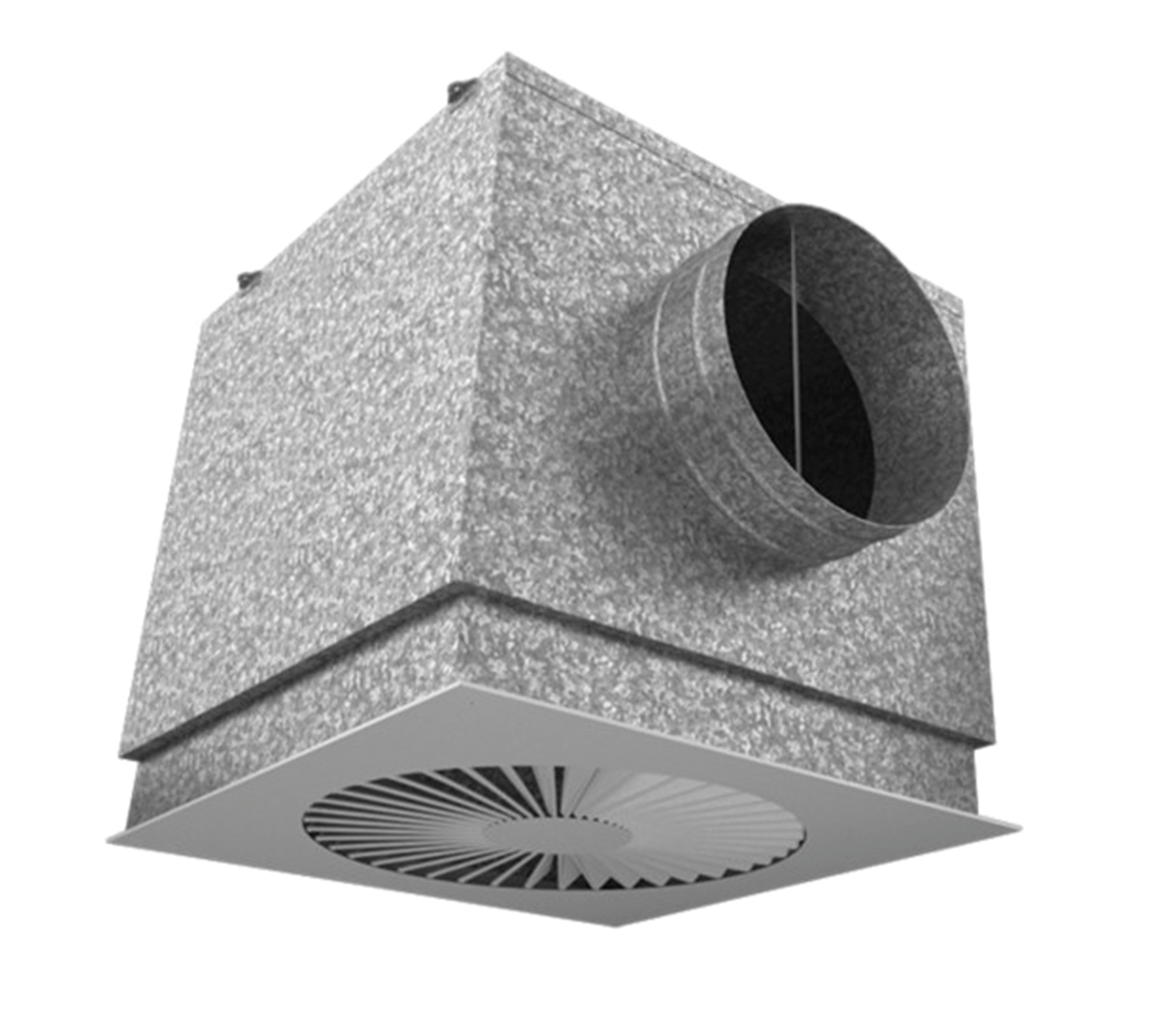air outlets | Ceiling Diffuser
Stamped Swirl Diffuser SD
Construction
Frame
Made from High Quality extruded aluminum Profile with 30 mm flange width1.2 mm (or)1.5 mm thick aluminum sheet.
Blade
A radial array of deflection blades are pressed into a square panel.
Neck
Standard size 250 dia.
Module
600 mm × 600 mm, 595 mm × 595 mm.
Plenum
20 gauge (or) 22 gauge thick GL sheet.

Description
- The frame and blades are made from high quality extruded aluminum profiled construction with Powder coated color finish.
- Supply swirl diffuser and return swirl diffuser can be supplied with volume damper to control static pressure and the air volume flow rate; installed in plenum box.
- The fixed swirl diffuser used for the supply of cooled or heated air.
- A high induction is obtained by the exceptional swirl discharge this quickly reduces the difference in temperature and velocity of the induced air.
- Suitable for VAV terminal boxes.
- This diffuser can also be used for exhaust.
- Foam gasket is sealed around the back of the frame as option to avoid air leakage.
- Powder coated color finish per RAL color codes as standard and flexibility of finish.

Variants
FSD – Q :
Square diffuser face

FSD – R :
Circular diffuser face

Connection
H:
Horizontal duct connection

V:
Vertical duct connection

Parts & Characteristics
- Circular or square diffuser face.
- Diffuser faces with radially arranged fixed air control blades.
- Plenum box for supply air with an optimized equalizing element that ensures a uniform airflow through the diffuser face.
- Simple installation of the diffuser face due to central fixing screw with decorative cap.
- Damper blade for volume flow rate balancing ( optional ).
Attachments
- Damper blade for volume flow rate balancing or square diffuser face.
- Pressure tap and cord – operated damper blade for volume flow rate balancing with the diffuser face in place.
Accessories
- Lip seal.
Materials & surfaces
- Diffuser face made of galvanized sheet steel.
- Plenum box and cross bar made of galvanized sheet steel.
- Plenum box and made of plastic and galvanized sheet steel.
- Lip seal made of rubber.
- Diffuser face powder – coated RAL 9010 pure white or any other color code.
Dimension

Technical Information
- Ceiling swirl diffusers in air conditioning systems create a swirl to supply air to rooms.
- The resulting airflow induces high levels of room air, thereby rapidly reducing the airflow velocity and the temperature difference between supply air and room air.
- Ceiling swirl diffusers allow for large volume flow rates.
- The result is a mixed flow ventilation in comfort zones, with good overall room ventilation, creating only very little turbulence in the occupied zone.
- Type SWF ceiling swirl diffusers have fixed blades.
- Air discharge is horizontal Omni directional.
- The supply air to room air temperature difference may range from -12 to +10 K.
- A damper blade (optional) simplifies volume flow rate balancing for commissioning.
- Pressure tap and cord-operated damper blade (optional) allow for volume flow rate balancing with the diffuser face in place.
- To give rooms an aesthetic, uniform look, Type SWF diffusers may also be used for extract air.
Plenum Box

- 1- Diffuser face
- 2- Central fixing screw
- 3- Plenum box
- 4- Cross bar
- 5- Suspension hole
- 6- Spigot optional
- 7- Lip seal
- 8- Damper blade for volume flow rate balancing
- 9- Pressure tap
- 10-Green cord for closing the damper blade
- 11-White cord for opining the damper blade
- 12-Measuring tube
- 13-Text label indicating plenum box variant
Selection
- Data obtained from tests conducted in accordance with ANSI/ASHRAE standard 70-2006. Actual performance with flexible duct inlet, may vary in the field.
- Throw values given are for terminal velocities of 150, 100 and 50 fpm and for isothermal conditions.
- Each NC value represents the noise criteria curve that will not be exceeded by the sound pressure in any of the octave bands, 2 through 7, with a room absorption of 10 dB, re 10-12 watts.
- Dash (-) in space denotes an NC Value of less than 10.
- All pressures are given in inches of water.
- To obtain static pressure, subtract the velocity pressure from the total pressure.

How to order

